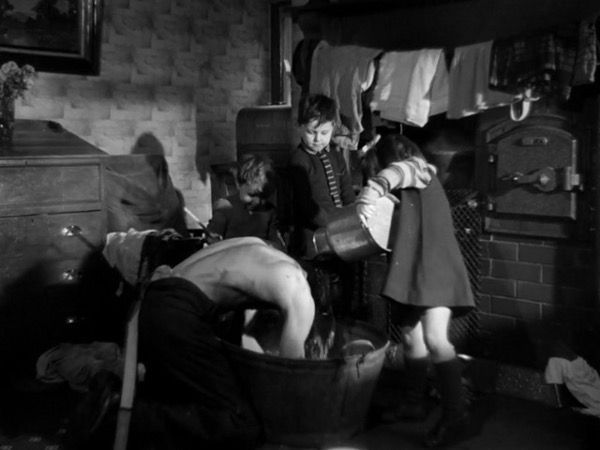Eye For Film >> Movies >> The Silent Village (1943) Film Review
The Silent Village
Reviewed by: Rebecca Naughten

In May 1942, the Czechoslovakian government-in-exile sent two soldiers to Prague to assassinate the feared Acting Reich Protector of Bohemia and Moravia (which encompassed Czechoslovakia), Reinhard Heydrich. The high-ranking Nazi officer died in early June as a result of the injuries he sustained in the attack. In retaliation, the Nazi High Command ordered reprisals on a civilian population and singled out the mining village of Lidice - all adult males in the village were shot, the women were sent to concentration camps and children were likewise handed over the authorities. The village was razed to the ground.
Humphrey Jennings' film about the incident transposes events to the mining village of Cwmgiedd in south-west Wales - an idea suggested by Viktor Fischl, a Jewish Czech in exile in Britain who wrote to the Crown Film Unit with a synopsis that would form the basis of The Silent Village. The geographical relocation of the story serves both to highlight the common links between disparate communities resisting the Nazis across Europe but also to drive home the dangers of being invaded by the Third Reich.

The first section of the film presents a idyllic image of rural Wales, with a close-knit community revolving around the mine and the church. Scenes of domestic life further draw the audience into the community as families go about their normal lives. Fascism arrives in the form of a motor car with a loudhailer informing the village that they are now under a new 'protectorate'. The demands and threats made by this faceless voice - the oppressor's lack of physical form makes them seem omnipresent - quickly escalate as it becomes clear that the community will not submit to the invader's demands and instead organise themselves to commit sabotage. Death sentences are soon being announced in radio broadcasts, turning the domestic wireless into a malevolent object within each home.
The speaking of Welsh is prohibited early on but the film weaves Welsh hymns and folk songs into its soundtrack - likewise individuals, such as ateacher who urges her pupils to speak Welsh at home, and the community as a whole resiliently cling to their cultural identities, unifying the village and leaving the aggressor with no purchase within the group. This cultural defiance reaches its peak in a scene where the men are lined up for execution - the soundtrack swells with the sound of them singing the Welsh national anthem before gunshots herald silence.
An intertitle card informs us of what happened next - that the Nazis subsequently claimed that "the name of the community has been obliterated" - at which point the film loops around on itself to show the villagers of Cwmgiedd hearing or reading the news accounts of what happened in Lidice. Contrary to the intentions behind the reprisals, instead of instilling fear in the people, the film suggests that the story instead ignites a sense of working class solidarity. A Welsh trade union man states that "The Nazis were wrong. The name of Lidice has not been obliterated. The name of Lidice has been immortalised. It will live in the hearts of miners the world over".
In celebrating the bravery of resistance on a personal and communal scale - and building to a real emotional wallop in its depiction of Lidice's eventual fate - The Silent Village contributes to that immortalisation. The film is available to watch for free on the BFI Player and is screening as part of a showcase at the AV Festival.
Reviewed on: 21 Feb 2016
















